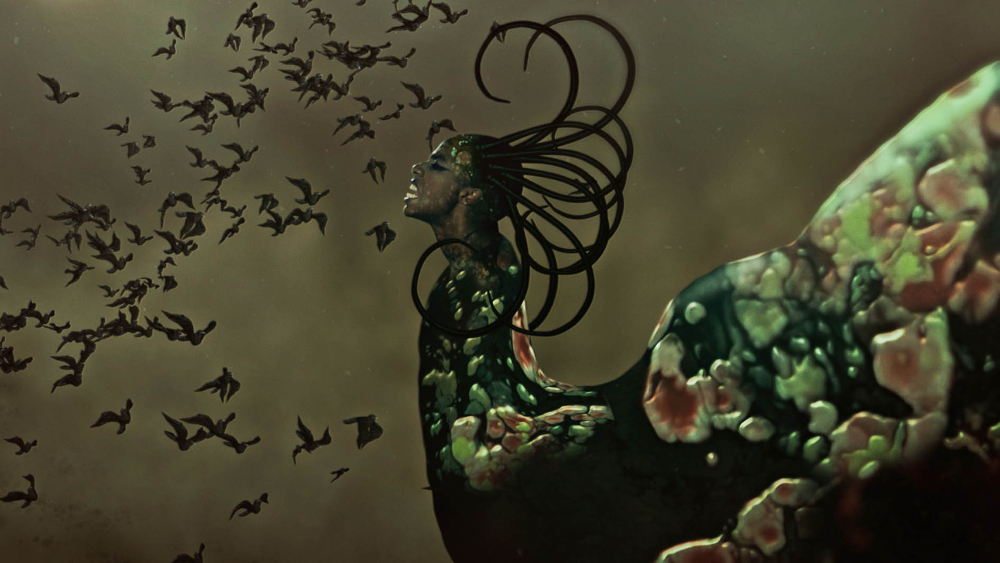On the night of the opening a curator at Stevenson Gallery’ welcomes me with her usual warmth. I mention, jokingly, that the show is rather poorly attended. She smiles but reveals a situation that had skipped my mind: “People in Cape Town don’t attend openings of artists they don’t know.”
But Kings County, a group show of five, comprises notable and emerging names in contemporary African art to be either unknown or poorly attended. The term “Kings County” is an epithet for Brooklyn, New York. Interestingly, Brooklyn and Cape Town share historical parallels as cities first invaded by the Dutch trading companies and then the British. But, unlike Cape Town, Brooklyn is noted for its cultural diversity.
‘Distortions about Africa and its cultures’
Well, we are all too familiar with Cape Town’s “moody swings”, and more so to its untoward disdain for blacks. And it seems that not even the Kings County’s visit will shake the city out of this notorious bigotry. “When I am in Brooklyn, at least in certain parts of it, I feel that no one can walk up to me and demand to know what I’m doing there,” writes art historian and novelist Teju Cole in a featured piece attributed to the show. His comment momentarily comes too close to delete the prevalence of generalised anti-black violence as a global problem.
In another he humorously jerks us back to reality. “This world exists simply to satisfy the needs – including, importantly, the sentimental needs – of white people and Oprah [Winfrey].” Meleko Mokgosi’s formal temperament complements Cole’s but seems less preoccupied with the Kings County’s benign peculiarity. Using text as image, or vice versa, Mokgosi reproduces 19th- and 20th-century museum wall texts and superimposes inscriptions on them to point out to us their casual display of distortions about Africa and its cultures.

By way of rebutting commentaries, quotes and marks, the artist shows how this appetite for othering, and its distortive labour, is an ersatz substitute for the West’s own self-imaging. Here there’s more than just a critique of the colonial archive; we’re invited to think how such modes of abjection are recuperated in the contemporary. Similarities also abound between Njideka Akunyili Crosby and Paul Mpagi Seku-ya, whose work captures indoor intimacy in relatively subdued and often in autobiographical ways. Crosby’s paintings, both large and garish, depict moments often omitted or forgotten in most artistic production.
A gathering of visual thoughts
Rendered in more or less optically illusive approach, each piece summons us to enter into the quiet reality of her private space. Sekuya sets up a tableau vivant of a photographic studio. His images raise questions about sexuality, the banality of work and studio practice – basically his everyday routine. But for a moment the eye is caught up in a puzzle; it vacillates between individual images and the larger installation. His staging of a studio setting inside the gallery tends to complicate contexts. In a way, it mirrors Crosby’s play between reality and fiction in her use of picture and painting.
This hybridisation is no less visible in Wangechi Mutu’s video piece titled The End of Eating Everything. The video shows a Medusa-like head with spiralling tresses pulling an oversize limbless body-cum-planet that seems to have greedily swallowed everything. Puffing clouds of steam like a goods train, it trudges through the sky, puking a blood-like liquid like a carnivorous creature accompanied by a flock of shrieking Hitchcockian birds. Here Mutu draws our attention not just to ecological tragedy or the sometimes perilous side of modern science, but also seems to show how in the process an anthropomorphised human is created in the image of the mechanical and animalistic.
In a way, The End of Eating Everything bears all the aesthetic and conceptual features of her collages – “the organic and the technological, the historical and futuristic”, as Cole notes. Though Kings County is predicated on the artists’ ideas about their Brooklyn, “where I look utterly normal”, as Cole says, it tends to gesture beyond the easily locatable or even nameable geographic spaces. Or rather, it is to an extent interested in less known sites and areas – their production and complexity.
Kings County isn’t a touristy promotion of Brooklyn, as we might easily assume, but a gathering of visual thoughts on far more interesting things.
Kings County is on at Stevenson Gallery, Buchanan Building, 160 Sir Lowry’s Road, Woodstock, until November 22